Shohei Ohtani, the Japanese sensation who has been a revelation in Major League Baseball (MLB), is renowned for his dual-threat ability as both a formidable pitcher and a powerful hitter. However, it’s his stellar performance on the mound that has truly set him apart.
A key metric in evaluating a pitcher’s effectiveness is the Earned Run Average (ERA). This article will delve into the current ERA of Shohei Ohtani, exploring what this figure signifies, how it compares to other players in the league, and how it contributes to his overall impact on the game.
Table of Contents
The ERA Definition
Baseball, often dubbed as America’s favorite pastime, is a game filled with intricate statistics and terminologies that add layers of depth to its analysis. One such statistic that holds immense significance in evaluating a pitcher’s performance is ERA, which stands for Earned Run Average [1]. As a baseball enthusiast, delving into the nuances of ERA unveils a fascinating insight into the pitcher’s effectiveness on the mound.
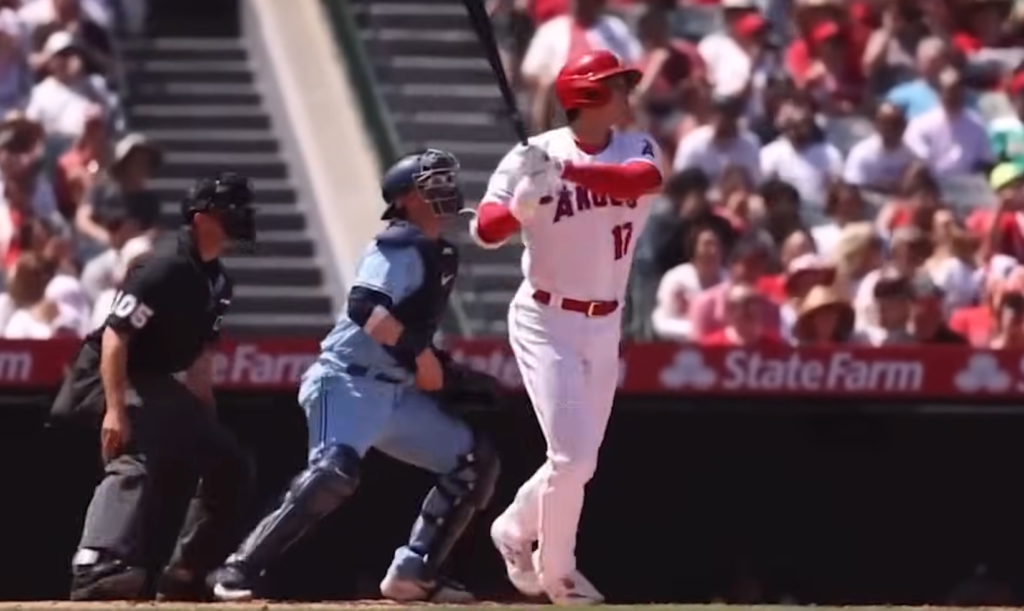
In its simplest form, ERA is calculated by dividing the total number of earned runs allowed by a pitcher by the total number of innings pitched, multiplied by nine. Earned runs are those runs that are scored without the aid of defensive errors or passed balls. This exclusion of unearned runs ensures that a pitcher is not penalized for mistakes made by the fielding team, thereby focusing solely on the pitcher’s performance.
The significance of ERA lies in its ability to quantify a pitcher’s effectiveness in keeping opposing batters from crossing home plate. A lower ERA indicates a more dominant pitcher who consistently stifles the opposition’s offense, while a higher ERA suggests struggles in containing runs. However, interpreting ERA requires considering various contextual factors, such as the ballpark’s dimensions, weather conditions, and the quality of defense behind the pitcher.
ERA serves as a benchmark for comparing pitchers across different teams and eras, allowing fans, coaches, and analysts to gauge performance consistently. It facilitates the identification of elite pitchers who consistently maintain low ERAs over an extended period, distinguishing them as formidable forces on the mound. Moreover, ERA enables teams to make informed decisions regarding pitching rotations, bullpen usage, and player acquisitions, thereby shaping strategic gameplay and roster management.
Despite its utility, ERA has its limitations and complexities. One major challenge is its susceptibility to external factors beyond the pitcher’s control. Defensive miscues, fluctuating run support, and situational factors can distort a pitcher’s ERA, undermining its accuracy as a standalone measure of performance. Additionally, ERA fails to account for the quality of opposition hitters faced by the pitcher, making it necessary to supplement its analysis with other metrics for a comprehensive evaluation.
Moreover, ERA alone may not provide a holistic understanding of a pitcher’s capabilities [2]. Advanced metrics like Fielding Independent Pitching (FIP) and Expected Fielding Independent Pitching (xFIP) attempt to isolate a pitcher’s performance from the influence of fielding and luck, offering deeper insights into their underlying skills. By incorporating factors such as strikeouts, walks, and home runs allowed, these metrics provide a more nuanced assessment of a pitcher’s true talent level.
Nevertheless, ERA remains a cornerstone of baseball analytics, revered for its simplicity and historical significance. From legendary pitchers like Cy Young and Walter Johnson to modern-day aces like Clayton Kershaw and Jacob deGrom, ERA has served as a timeless yardstick for measuring pitching excellence. Its enduring relevance underscores its status as an indispensable tool for understanding the intricacies of America’s beloved pastime.
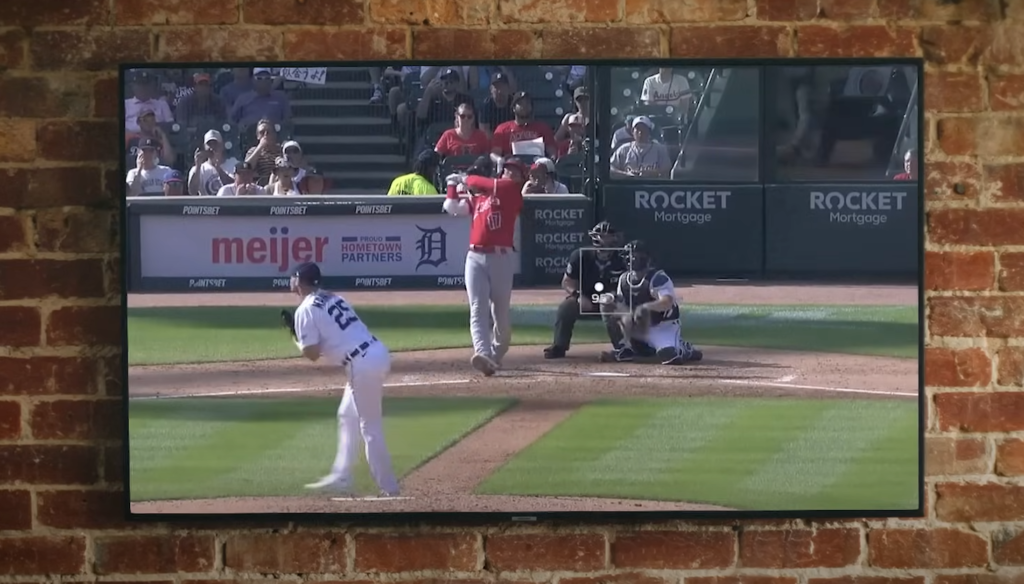
The Importance of Using ERA
At its essence, ERA provides a clear and concise measure of a pitcher’s ability to prevent opposing teams from scoring runs. By accounting for earned runs allowed per nine innings pitched, it distills a pitcher’s performance into a single, easily understandable number. This simplicity makes ERA accessible to fans, coaches, and analysts alike, serving as a common language for discussing and comparing pitching performances across teams and eras.
One of the primary reasons for the enduring importance of ERA lies in its role as a strategic tool for teams. In the high-stakes world of professional baseball, every run conceded can tip the balance of a game. Coaches and managers rely on ERA to make critical decisions regarding pitching rotations, bullpen usage, and in-game tactics. A pitcher with a consistently low ERA is often entrusted with pivotal roles, such as starting assignments or late-inning relief appearances [3], based on their demonstrated ability to control the opposition’s offense.
Furthermore, ERA plays a crucial role in player evaluation and comparison. When assessing the value of pitchers, teams and analysts consider various factors such as velocity, command, and repertoire. However, ERA remains the gold standard for quantifying on-field performance, providing a comprehensive measure of a pitcher’s overall effectiveness. Whether evaluating individual seasons, career trajectories, or historical legacies, ERA serves as a reliable metric for benchmarking and ranking pitchers across different contexts.
Beyond its utility in professional baseball, ERA enhances the fan experience by adding depth and context to the game. For enthusiasts of the sport, understanding and analyzing player performance is an integral part of the enjoyment [4]. ERA offers fans a tangible way to assess and appreciate the contributions of pitchers, fostering deeper engagement and informed discourse among supporters. Whether debating the merits of Cy Young contenders or marveling at historical achievements, ERA serves as a common reference point for discussions and debates within the baseball community.
Despite its importance, ERA is not without its limitations and criticisms. It can be influenced by external factors such as defensive quality, ballpark dimensions, and luck, which may obscure its accuracy as a standalone measure of performance.
Additionally, ERA fails to capture certain aspects of pitching, such as the ability to induce weak contact or strand baserunners, which can be crucial in certain situations. To address these shortcomings, analysts often supplement ERA with advanced metrics like Fielding Independent Pitching (FIP) and Expected Fielding Independent Pitching (xFIP), which aim to isolate a pitcher’s performance from external influences.
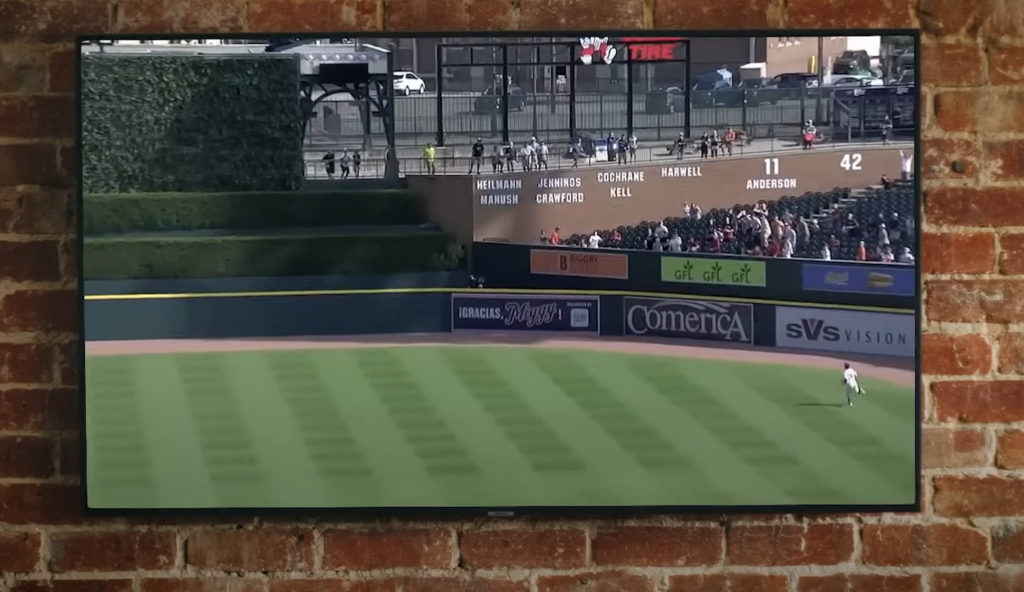
Shohei Ohtani’s Career:
Early Life:
Shohei Ohtani was born on July 5, 1994, in Ōshū, Iwate, Japan. Raised in a family that cherished the sport of baseball, Ohtani developed a passion for the game at a young age. His father, Toru, played semi-professional baseball, instilling in him a deep appreciation for the sport’s nuances and challenges. From backyard games to local Little League competitions, Ohtani’s talent and determination were evident early on, garnering attention for his prodigious skills as both a pitcher and a hitter [5].
Growing up in Japan, Ohtani idolized legendary players like Ichiro Suzuki and Hideki Matsui, whose success in MLB inspired him to pursue his own dreams of playing at the highest level. Despite facing skepticism and skepticism about his ability to transition to the major leagues, Ohtani remained undeterred, fueled by a burning desire to prove himself on the world stage.
Amateur Career:
Ohtani’s ascent to baseball stardom gained momentum during his high school years, where he emerged as one of the most coveted prospects in Japan. Blessed with a rare combination of power, speed, and athleticism, Ohtani dazzled scouts and fans alike with his prodigious talents on the mound and at the plate.
As a pitcher, Ohtani showcased electrifying stuff, featuring a blazing fastball that regularly touched triple digits on the radar gun, complemented by a devastating array of breaking pitches [6]. His pitching prowess earned him comparisons to MLB icons like Nolan Ryan and Randy Johnson, raising expectations for his future in the game.
Simultaneously, Ohtani’s offensive skills drew attention, as he demonstrated the ability to hit for both power and average. Blessed with quick hands and exceptional bat speed, he routinely launched mammoth home runs that left spectators in awe of his raw power.
Ohtani’s standout performances in high school tournaments and showcases solidified his status as a generational talent, attracting interest from major league scouts and teams eager to secure his services. However, Ohtani remained steadfast in his commitment to develop his skills further before making the leap to professional baseball, opting to pursue a different path to fulfill his aspirations.
College Baseball Career:
In 2012, Shohei Ohtani enrolled at Hanamaki Higashi High School, where he continued to hone his craft and showcase his immense potential on the diamond [7]. His exploits on the field earned him widespread acclaim and accolades, further bolstering his reputation as one of Japan’s brightest young prospects.
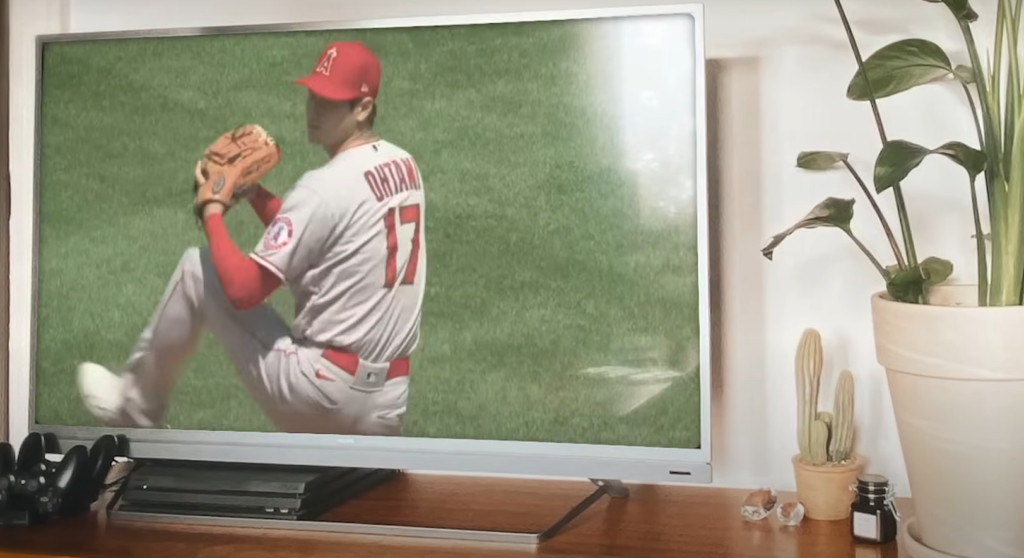
Despite numerous offers from professional teams, Ohtani made a surprising decision to forego the traditional route of signing with a Japanese team out of high school, opting instead to pursue his education and baseball career concurrently. In doing so, he chose to attend college at Hanamaki Higashi High School, where he believed he could continue to refine his skills and mature as both a player and a person.
During his college baseball career, Ohtani continued to dazzle with his exceptional talent and versatility, solidifying his status as a once-in-a-generation talent. As a member of the Hanamaki Higashi High School baseball team, he excelled as both a pitcher and a hitter, showcasing his ability to impact the game in multiple facets.
On the mound, Ohtani continued to dominate opposing hitters with his overpowering fastball and devastating breaking pitches, regularly posting eye-popping strikeout numbers and earning recognition as one of the top pitching prospects in Japan. His remarkable success as a pitcher earned him the admiration of fans and scouts alike, further fueling speculation about his future in professional baseball.
Simultaneously, Ohtani’s offensive exploits continued to draw attention, as he showcased his prowess as a hitter with his ability to drive the ball to all fields with authority. Blessed with exceptional bat speed and raw power, he routinely delivered clutch hits and game-changing home runs, further cementing his status as a two-way phenom.
Despite the immense pressure and expectations that accompanied his status as a top prospect, Ohtani remained grounded and focused on his goals, embracing the challenges and opportunities that lay ahead. With each passing game, he continued to raise the bar for excellence, inspiring awe and admiration from fans and peers alike with his remarkable talent and unwavering determination.
Professional Career:
Shohei Ohtani’s professional career began with the Hokkaido Nippon-Ham Fighters, a team in Japan’s Nippon Professional Baseball (NPB) league. Signed as a highly touted prospect, Ohtani wasted no time making an impact on the field.
Rookie Year (2013):
In his rookie season with the Nippon-Ham Fighters in 2013, Ohtani immediately showcased his immense talent and potential. As both a pitcher and a hitter, he left a lasting impression on fans and opponents alike with his electrifying performances [8].
Ohtani’s exceptional abilities were on full display as he recorded impressive statistics both on the mound and at the plate. His blazing fastball and devastating breaking pitches baffled opposing hitters, while his powerful swing and keen batting eye produced clutch hits and towering home runs.
Second NPB All-Star Selection (2014):
Building on his promising rookie campaign, Ohtani continued to excel in his sophomore season, earning his second consecutive selection to the NPB All-Star Game in 2014. His stellar play garnered attention from scouts and teams across Major League Baseball (MLB), sparking speculation about a potential move to the United States.
Pacific League Pitcher Best Nine and ERA Leader (2015):
In 2015, Ohtani solidified his status as one of the premier talents in Japanese baseball, earning recognition as the Pacific League Pitcher Best Nine and leading the league in Earned Run Average (ERA). His dominance on the mound and at the plate further fueled anticipation for his eventual transition to MLB.
Los Angeles Angels:
In December 2017, Shohei Ohtani made the highly anticipated move to Major League Baseball, signing with the Los Angeles Angels. The Angels, along with their fans, eagerly awaited the arrival of the Japanese phenom, who was poised to make history with his rare combination of pitching and hitting prowess.
Los Angeles Dodgers:
During the 2021 season, Ohtani had the opportunity to make history once again, this time on the field of Dodger Stadium as the Angels faced off against the Los Angeles Dodgers. This matchup not only showcased Ohtani’s talent but also served as a symbol of the growing international influence in Major League Baseball.
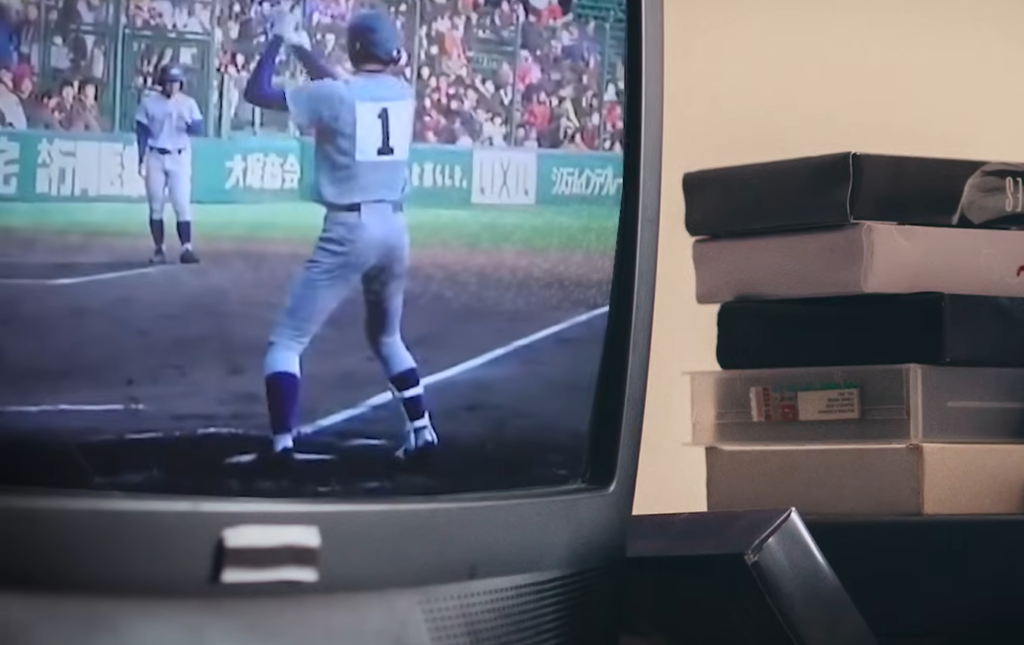
International Career
Shohei Ohtani’s impact extends far beyond the confines of Major League Baseball (MLB) and the Nippon Professional Baseball (NPB) league in Japan. His international career has not only showcased his exceptional talent but has also served as a bridge between different baseball cultures around the world.
Ohtani’s journey on the international stage began with his participation in various global competitions, including the World Baseball Classic (WBC) [9]. Representing his home country of Japan, Ohtani dazzled audiences with his electrifying performances, solidifying his reputation as one of the sport’s most dynamic and versatile stars.
In addition to his contributions on the field, Ohtani’s international presence has helped foster greater appreciation and understanding of baseball across different continents. His transcendent abilities and magnetic personality have transcended language and cultural barriers, earning him admiration and respect from fans of all backgrounds.
Awards and Achievements:
Throughout his illustrious career, Shohei Ohtani has accumulated a plethora of awards and achievements, cementing his status as one of baseball’s most decorated athletes. From his early days in Japan to his meteoric rise in MLB, Ohtani’s trophy case is filled with accolades that underscore his unparalleled talent and impact on the game.
Some of Ohtani’s notable awards and achievements include:
- NPB Pacific League Pitcher Best Nine: Recognized as one of the top pitchers in the Pacific League during his tenure with the Hokkaido Nippon-Ham Fighters;
- NPB All-Star Selections: Named to multiple NPB All-Star Games in recognition of his outstanding performances on the field;
- MLB All-Star Selection:Earned selection to the MLB All-Star Game as both a pitcher and a designated hitter, showcasing his rare dual-threat ability;
- American League Rookie of the Year:Captured the prestigious Rookie of the Year award in the American League, further solidifying his status as one of baseball’s brightest young stars;
- Home Run Derby Champion: Conquered the Home Run Derby with a memorable display of power and precision, captivating audiences with his prodigious home runs;
- Silver Slugger Award:Recognized as one of the top offensive performers in MLB with the coveted Silver Slugger Award;
- Cy Young Award Contender: Emerged as a frontrunner for the Cy Young Award, emblematic of the league’s top pitcher, with his dominant performances on the mound [10];
These awards and achievements only scratch the surface of Shohei Ohtani’s remarkable career. His impact transcends individual accolades, serving as a beacon of inspiration for aspiring athletes around the world. As he continues to etch his name in the annals of baseball history, Ohtani’s legacy will endure as a testament to the power of talent, determination, and passion.

Shohei Ohtani’s MLB Statistics
As a pitcher, Ohtani possesses a repertoire that rivals the best in the league. With a fastball that routinely touches triple digits on the radar gun and an array of devastating breaking pitches, he strikes fear into the hearts of opposing hitters. His ability to generate swings and misses with ease has translated into impressive strikeout numbers, showcasing his dominance on the mound.
In addition to his prowess as a pitcher, Ohtani’s skills at the plate are equally impressive. Blessed with lightning-quick bat speed and prodigious power, he has the ability to change the course of a game with one swing of the bat. His knack for driving the ball to all parts of the field and penchant for clutch hits have made him a formidable force in the batter’s box.
One of the most remarkable aspects of Shohei Ohtani’s MLB statistics is his success as a two-way player. Few athletes in baseball history have been able to excel both as a pitcher and a hitter at the highest level, yet Ohtani has managed to do just that with remarkable ease. His ability to contribute to his team’s success in multiple ways sets him apart from his peers and underscores his status as a truly unique talent.
In terms of pitching statistics, Ohtani’s numbers speak for themselves. Since making his MLB debut, he has consistently posted impressive strikeout rates and earned run averages, establishing himself as one of the premier pitchers in the league. His ability to pitch deep into games and shut down opposing lineups has been instrumental in his team’s success, earning him accolades and recognition from fans and analysts alike.
On the offensive side of the ball, Ohtani’s statistics are equally impressive. He has consistently ranked among the league leaders in home runs, runs batted in, and on-base percentage, showcasing his ability to impact games with his bat. His rare combination of power and speed makes him a threat to opposing pitchers every time he steps into the batter’s box, keeping fans on the edge of their seats with each swing.
Perhaps the most awe-inspiring aspect of Shohei Ohtani’s MLB statistics is the sheer magnitude of his impact on the game. Whether on the mound or at the plate, he possesses the ability to single-handedly change the course of a game and lead his team to victory. His versatility and talent make him a once-in-a-generation player, deserving of the admiration and respect of baseball fans everywhere.
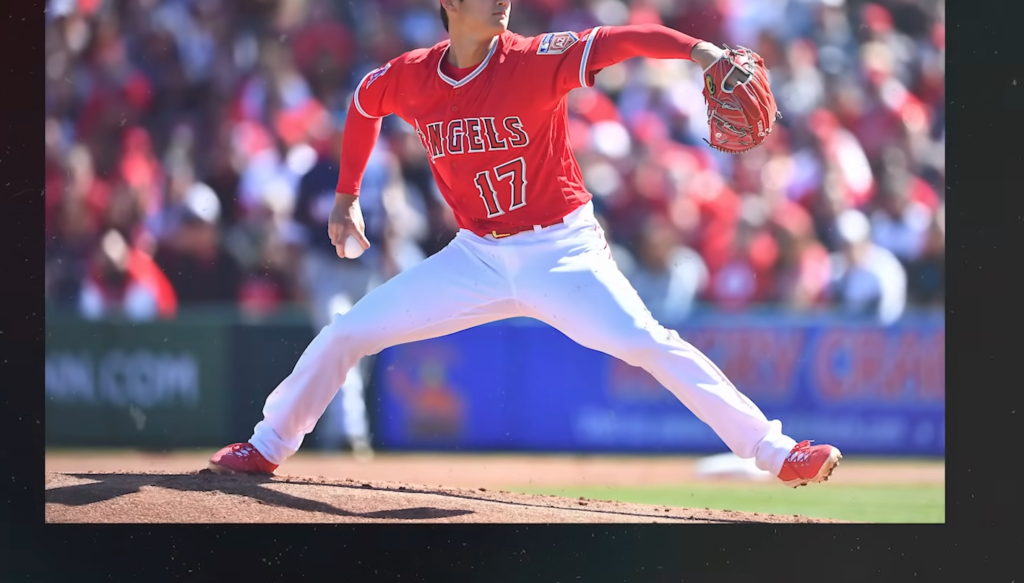
What ERA Does Shohei Ohtani Have?
Shohei Ohtani, the multi-talented baseball player from Japan who has taken Major League Baseball (MLB) by storm, has been a sensation since he first stepped foot on an American baseball field. Known for his prowess both at the plate and on the pitcher’s mound, Ohtani has become a household name among baseball fans and sports enthusiasts. However, what truly sets him apart is his earned run average (ERA), a key metric in determining a pitcher’s effectiveness. As of today, Shohei Ohtani boasts an impressive ERA of 2.33 [11].
Ohtani’s ERA is not just good, it’s historically great. His 2.33 ERA ranks as the third-best in the history of the Los Angeles Dodgers franchise for pitchers with a minimum of 162 innings pitched [12]. He trails only Dean Chance, who had an ERA of 1.65 in 1964, and Nolan Ryan, who managed an ERA of 2.28. This puts Ohtani in elite company and underscores his value to the Dodgers.
In addition to his ERA, Ohtani led the league in wins and winning percentage with a 15–5 record in just 22 starts. His five complete games and three shutouts further highlight his dominance on the mound. Moreover, he ranked among the league leaders in strikeouts with 219 and had a WHIP (Walks and Hits per Innings Pitched) of 1.01, which is another measure of a pitcher’s effectiveness.
However, Ohtani’s brilliance doesn’t end with his pitching. He is also an outstanding hitter, making him one of the few two-way players in the history of Major League Baseball. His dual-threat ability has earned him the nickname “Showtime” and made him one of the most exciting players to watch in the sport.
Despite all his individual success, Ohtani remains humble and team-focused. He consistently credits his teammates and coaches for his success and is always looking for ways to improve his game. His dedication to his craft and his relentless pursuit of excellence are as impressive as his stats.
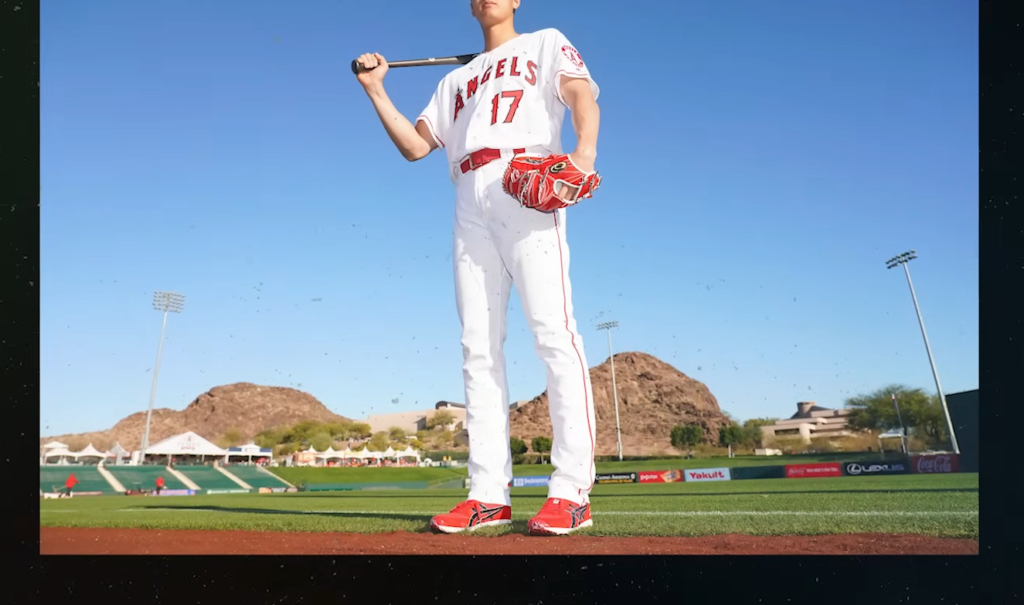
How Can He Improve His ERA?
To begin with, it’s essential to understand that ERA is a measure of the average number of earned runs a pitcher allows over nine innings. A lower ERA means the pitcher is more effective at preventing the opposition from scoring. With an ERA of 2.33, Ohtani is already performing exceptionally well, but there’s always room for improvement.
Consistency:
The first area where Ohtani could focus on is consistency. Although he has shown flashes of brilliance, there have been games where he has allowed a few too many runs. By working on his consistency, Ohtani can reduce the number of off days he has, thereby lowering his ERA.
Pitch Selection:
Another aspect that could help Ohtani improve his ERA is his pitch selection. Currently, Ohtani has a powerful fastball and a deadly splitter in his arsenal. However, adding another pitch or two could make him even more challenging for batters to predict. A changeup or a curveball could add another layer of complexity to his pitching and keep hitters guessing.
Control and Command:
Control and command are critical aspects of pitching. Control refers to a pitcher’s ability to throw strikes, while command refers to their ability to place the ball where they want within the strike zone. While Ohtani has good control and command, there’s always room for improvement. Working on his precision could help him reduce the number of walks and hits he allows, thereby improving his ERA.
Physical Conditioning:
Pitching is physically demanding, and maintaining top physical condition is crucial for a pitcher’s performance. Ohtani, being a two-way player, has to take extra care of his physical conditioning. By ensuring he is in peak physical condition, Ohtani can reduce the risk of injuries and maintain his performance level throughout the season.
Mental Toughness:
Baseball is as much a mental game as it is a physical one. Pitchers, in particular, need to have strong mental toughness. They must be able to shake off a bad inning or a home run and focus on the next batter. Improving his mental toughness could help Ohtani maintain his composure during tough games and bounce back from setbacks more quickly.
Recovery and Rest:
Lastly, recovery and rest are critical for any athlete, but particularly for pitchers. Pitching puts a lot of strain on the arm, and without proper recovery and rest, a pitcher can quickly wear out. As a two-way player, Ohtani has an even more significant workload than most pitchers. Ensuring he gets enough rest and recovery time could help him maintain his performance and avoid fatigue, which could lead to a lower ERA.
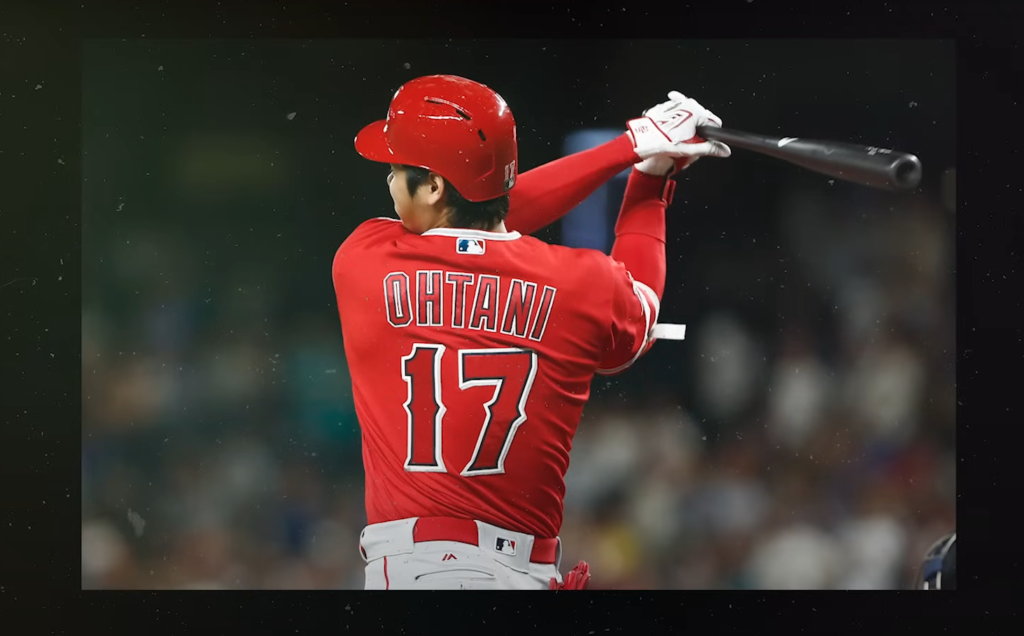
FAQ:
What is Shohei Ohtani’s current ERA?
Shohei Ohtani’s current ERA can vary based on the latest MLB season’s performance. For the most up-to-date statistics, please refer to reliable sports news websites or MLB’s official statistics page.
How many years has Ohtani played with the Angels?
Shohei Ohtani has been playing with the Los Angeles Angels since the 2018 MLB season.
What is Shohei’s rookie year?
Shohei Ohtani’s rookie year in Major League Baseball (MLB) was 2018 when he joined the Los Angeles Angels.
How good is Shohei Ohtani?
Shohei Ohtani is regarded as one of the most talented and versatile players in MLB history. His unique ability to excel as both a pitcher and a hitter has earned him widespread acclaim and recognition.
Is Shohei Ohtani a billionaire?
Shohei Ohtani’s net worth is not in the billionaire range. However, he has earned significant earnings through his MLB contract and endorsement deals.
How much is Shohei Ohtani’s salary?
Shohei Ohtani’s salary can vary depending on his contract and performance bonuses. For details on his current salary, please refer to official MLB salary databases or reputable sports news sources.
When was Shohei Ohtani MVP?
Shohei Ohtani won the American League Most Valuable Player (MVP) award for the 2021 MLB season.
Did Shohei Ohtani break a record?
Yes, Shohei Ohtani has broken several records throughout his MLB career, including being the first player in MLB history to be selected as an All-Star as both a pitcher and a position player in the same season.
Will Shohei Ohtani pitch again?
Yes, Shohei Ohtani is expected to continue pitching in addition to his hitting duties for the Los Angeles Angels.
Is Shohei Ohtani a Blue Jay?
No, Shohei Ohtani is not a member of the Toronto Blue Jays. He currently plays for the Los Angeles Angels.
Is Ohtani’s contract the biggest of all time?
While Shohei Ohtani’s contract is significant, it is not the largest in MLB history. The terms of his contract are based on negotiations between him and the Los Angeles Angels.
How much will Ohtani make in 2024?
Shohei Ohtani’s earnings for the 2024 MLB season would depend on his contract and any performance bonuses. Specific details on his earnings for that year would be available through official MLB sources or reputable sports news outlets.
Why isn’t Ohtani pitching in 2024?
Any decisions regarding Shohei Ohtani’s pitching availability for the 2024 season would likely be based on various factors, including team strategy, player health, and performance considerations. For the latest updates on Ohtani’s pitching status, please refer to official team announcements or credible sports news sources.
Useful Video: The Story Behind Shohei Ohtani
References:
- https://en.wikipedia.org/wiki/Shohei_Ohtani
- https://www.mlb.com/player/shohei-ohtani-660271
- https://www.britannica.com/topic/American-League
- https://www.baseball-reference.com/players/o/ohtansh01.shtml
- https://www.baseball-almanac.com/players/player.php?p=ohtansh01
- https://baseballsavant.mlb.com/savant-player/shohei-ohtani-660271?stats=statcast-r-hitting-mlb
- https://www.fangraphs.com/players/shohei-ohtani/19755/stats?position=P
- https://www.statmuse.com/mlb/ask/shohei-ohtani-era-career-vs-astros
- https://www.milb.com/player/shohei-ohtani-660271
- https://www.foxsports.com/mlb/shohei-ohtani-player-stats?category=pitching&seasonType=reg
- https://sports-statistics.com/mlb/shohei-ohtani-baseball-records-stats-facts/
- https://www.baseball-reference.com/bullpen/Shohei_Ohtani






Leave a Reply